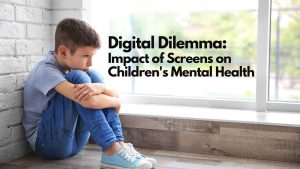The Quickly Evolving World of Social Media
A smart phone or tablet is an amazing gift. The entertainment and educational opportunities are nearly endless, but it also opens up the world of social media and cyberbullying. Parents give these amazing devices to their children without any plan for dealing with the inevitable drama that social media creates. As all School Resource Officers and school administrators know, the parent’s eyes will be eventually opened to the seemingly complex world of social media when their child finds themselves embroiled in a cyberbullying incident or victim of rude or inappropriate online comments. Parents need to be educated on social media’s inherent risks and given some essential guidelines on how to effectively monitor their children online.
I have been educating parents and their children for the past several years, helping them understand the quickly evolving world of social media and providing them with the tools and resources necessary for a safe and enjoyable experience online. The following steps will help a parent address their safety concerns with their child and help build boundaries needed for long-term safety.
Step 1 – Set expectations and open lines of communication.
First, parents need to understand that they are the sole owner of their child’s device. The parent is merely letting the child borrow it. It’s no different than when your employer gives you a phone or computer for work; you keep it, use it, and are responsible for it. At any time, your employer can take it from you, inspect it, put filters or monitoring software on it, or confiscate it if you are using it inappropriately. This is the dynamic that parents need to have with their children and their devices. The parent should explain to their child that they should have no expectation of privacy when it comes to their devices, the stakes are just too high to leave it up to them. Hopefully, this is a conversation that can be had before they hand them their new shiny smart phone.
Second, parents need to start an on-going conversation with their child. A recent study published in September’s Journal of American Medical Association, found a direct link between family dinners and a reduction in cyberbullying, fighting, depression, suicidal thoughts, alcohol, illegal drug use, and other mental health issues in teens. In fact, the more frequent the family dinners, the greater reduction they saw in these troubling behaviors. What was the key ingredient? Guess what? It wasn’t food. The food did, however, create the mandatory pit-stop for these children, giving their parents the opportunity to talk with them without being interrupted. Opportunities to have meaningful conversations with children can happen anywhere, at the park throwing around the ball or at a Girl Scout meeting. When it comes to talking about social media or Internet safety, most parents are at a loss. Why is it an “on-going” conversation? Why can’t it be a one-time talk? Sooner or later, no matter what systems a parent puts in place, their child is going to see inappropriate behavior online. An open line of communication will help their child feel safe about telling them what they are seeing or experiencing online.
One of the best tools to set expectations and start the conversation is an Internet Usage Contract. I have created a contract that parents can download at www.cybersafetycop.com. Parents should sit down with their child and read together each point of the contract. Each point of the contract should be a springboard for a discussion about cyber safety. For example, the parent should ask their child, why in point number one is it not a good idea to give out your personal information to a complete stranger. This type of open-ended question elicits more than a“yes” or “no” answer. It causes the child to internalize and reflect on the safety issue. Other possible follow up questions to this and other points would be: Have you heard of anyone doing that? What happened? What would have you done? The contract is a two-way conversation, not merely a list of do’s and don’ts. Lastly, the parent should explain the consequences or punishment for violating the contract. For the contract to mean anything, the parent must follow through on the consequences, whatever they may be. Parent and child then sign the contract and post it in the open as a reminder of the parent’s expectations.
Step 2 – Enable parental controls.
You can find parental controls on iOS (Apple) devices in Settings > General > Restrictions. Here, parents can manage some of the apps that come with the device, such as Safari (web browser), iTunes Store, and the dreaded In-App Purchase. Depending on the child’s age, some parents may not want them to have Internet access. If so, just turn off the Safari app. The Safari app will not show up on the home screen. Next, is “Allowed Content.” These are basic filtering options on music, movies, Internet sites, etc. This content filter is not a catchall; some sites with highly inappropriate content may sneak through. Lastly, you can adjust the “Privacy” for the device. Most notable here is “Location Services.” When enabled, this allows various apps to use the device’s GPS antenna. For example, if Location Services is enabled for the Camera, every photo snapped will have a GPS location from where it was taken. If you post that photo online, anyone who knows how to find this data will know exactly where it was taken. This could raise security concerns with regards to stalking or abduction.
Parents must protect the Restriction’s password from their child, as well as the iTunes password. Parents should be the gatekeeper to all of the apps that are installed on their child’s device. I suggest parents use review sites for parents, like www.commonsensemedia.org, to research the app that their child is asking for.
In addition to the controls mentioned above, wireless carriers, such as AT&T and Verizon, also have parental controls that can block calls and texts, limit texting and data usage, limit phone use by time of day, view a list of all the applications installed on your kid’s device and which of those apps they use the most, explore the contacts your kid has made, content filtering, or use their GPS to know their whereabouts right from a parent’s wireless phone. These additional controls can be extremely helpful, but usually come with an additional monthly charge.
Step 3 – Social Media (Yes or No?)
Knowing when to allow a child to enter the social media culture can sometimes be a difficult decision. All studies and polls agree that social media (Kik, Instagram, Facebook, etc.) are teenagers’ preferred method of connecting with friends, even when they are sitting in the same room together.
If your child is under the age of thirteen, most social media sites’ end user agreements have made it easy for parents on the fence of allowing their ten year-old on Instagram. Children under thirteen are not allowed to have social media accounts. Sure a parent could still set up their account, but they run the risk of sending the wrong message to their children: Rules don’t matter. If the website’s rules don’t matter, why should our family’s rules for the Internet matter?
If a parent thinks their child is mature enough to have a social media account, they must address the issue of cyberbullying and digital reputation. The permanency and unforgiving nature of social media is a difficult concept for children to understand. Children must understand that every post, picture, or comment made on the Internet is potentially permanent. Inappropriate posts or photos can have lifelong consequences and damaging lives and reputations forever. The recent arrest of two Florida girls whose alleged cyberbullying drove twelve-year-old Rebecca Sedwick to commit suicide is a fresh reminder of this. Before a teen presses the send button, they should be asking themselves, “Would my Mom or Dad be okay with this post?”
Parents need to teach their children two simple but critical concepts: First, treat others online the way you want to be treated offline. Second, everything posted online is a permanent reflection of you. Don’t post anything that you would not be comfortable with your parent reading.
The steps outlined above are only the first, but positive steps to help create a safe environment for teens online. There are no silver bullets. Real security is a multi-layered approach. No one single measure will cover all the bases, but overlapping security structures will provide a relatively safe (but not perfectly safe) environment. I tell my parents that cyber safety is a moving target. We need to be vigilant as parents and unafraid to delve into our children’s lives.
About the author:
Clay Cranford is a twelve-year law enforcement professional and is currently serving as a School Resource Officer in an Orange County, California city. Clay is a nationally recognized expert on Social Media and creator of the Cyber Safety Cop™ Instructor program. Cyber Safety Cop is training SROs and educators throughout the United States and providing their communities with important Internet safety information. He has appeared on “The Doctors” and Los Angeles CBS News to be interviewed about various school safety issues. Clay has more than 20 years of teaching experience and regularly speaks across the United States at school safety conferences. Clay is currently an instructor for Santa Ana Community College, Orange County Sheriff’s Advanced Officer Training School, and Orange County Regional Police Academy.





